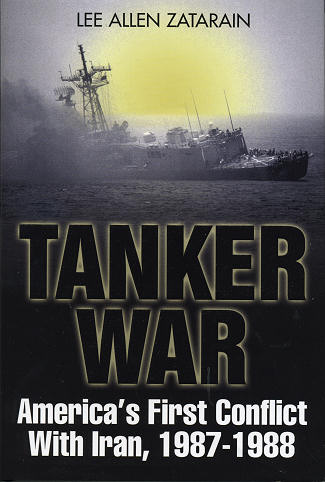 Aside
from a few instances, the year long campaign of the US military (mostly the
Navy) in the Persian Gulf was just a background hum to America and the world at
large. Little has been written on the subject and it was with great interest
that I started reading this book.
Aside
from a few instances, the year long campaign of the US military (mostly the
Navy) in the Persian Gulf was just a background hum to America and the world at
large. Little has been written on the subject and it was with great interest
that I started reading this book.
As a bit of a background, 1987 was when the Iran/Iraq war was
still going on. Ground fighting was at a stalemate and the two sides were
basically waging a sea war, attacking shipping in the Persian Gulf. This was
focused on Iraq's attack of the the large, slow supertankers that were carrying
oil from Iran and providing money for the Iranian war effort. Some offensive
operations were being carried out by Iran as well against tankers headed for the
other shore, as the countries of Kuwait, Saudi Arabia and the other Gulf States
were supplying Iraq with money.
In an effort to protect its supertanker fleet, Kuwait
reflagged many of its ships in the US, thus putting them under the protection of
the US Navy, which began operations with small convoys from the Arabian Sea to
Gulf ports and back. The US wasn't really prepared for what was to come and
during the initial convoys the USS Stark was struck by Exocet missiles
fired by an Iraqi aircraft and
nearly sank. Later the USS Samuel B Roberts struck an Iranian mine that
had been sown as part of a field across the normal tanker route. This was part
of a year of conflict, with Iranians using Silkworm
anti-ship missiles against targets and the US retaliating by destruction of
Iranian oil platforms that harbored Iranian gunboats. Other military ships were
attacked and some were sunk. The entire confrontation process was brought to a
head when the USS Vincennes shot down an Iran Air commercial airliner
in one of those instances were multiple errors happened in the right sequence to
foment disaster. A few months after that Iran and Iraq came to a cease-fire and
the need for US Navy presence stopped.
Of course, there is much more to things than what I've
outlined, but it does give a background to one of the best reads of the year.
Author Lee Allen Zatarain has combed archives and personal interviews to bring
us what is undoubtedly the best and most accurate account of the events of that
fateful time period. Offering looks and opinions of both sides of the situation,
there are conclusions there that for many will be difficult to accept, and for
others will be enlightening.
Combined with some excellent photographs, it is the sort of
book that you'll find to be a fascinating read. It is a superb book that answers
a lot of questions and brings up a few as well. It is one that you simply must
read. Highly recommended.
March 2008
Review book courtesy of
Casemate Publishing, where you can order your copy of this and many other superb books
and DVDs.
If you would like your product reviewed fairly and quickly, please contact
me or see other details in the Note to
Contributors.
 Aside
from a few instances, the year long campaign of the US military (mostly the
Navy) in the Persian Gulf was just a background hum to America and the world at
large. Little has been written on the subject and it was with great interest
that I started reading this book.
Aside
from a few instances, the year long campaign of the US military (mostly the
Navy) in the Persian Gulf was just a background hum to America and the world at
large. Little has been written on the subject and it was with great interest
that I started reading this book.